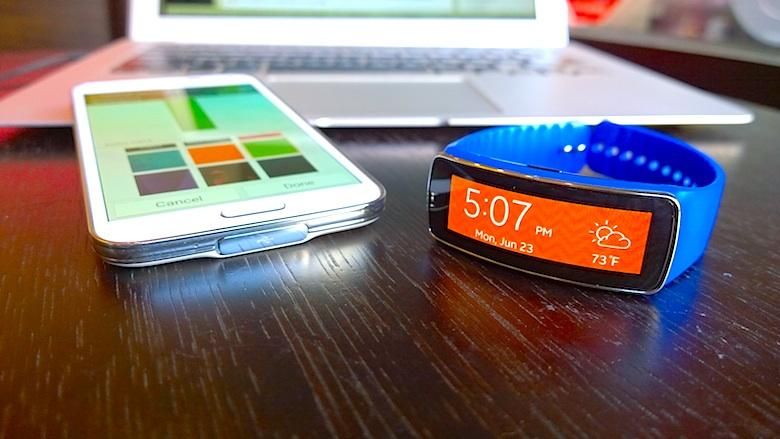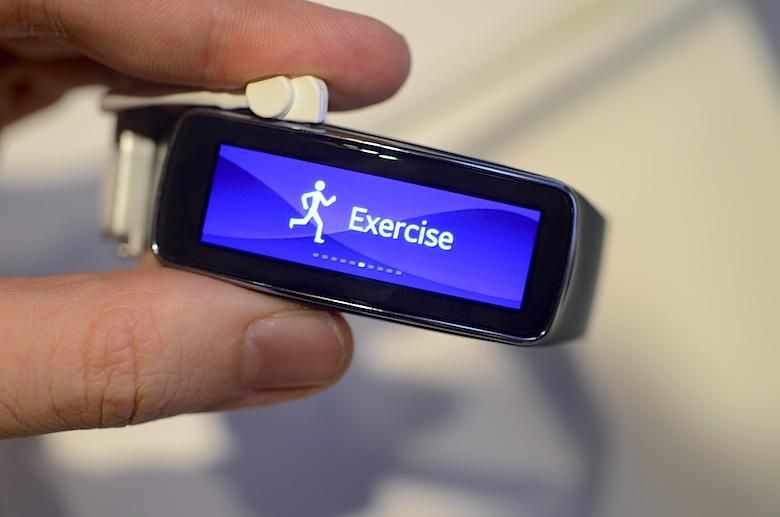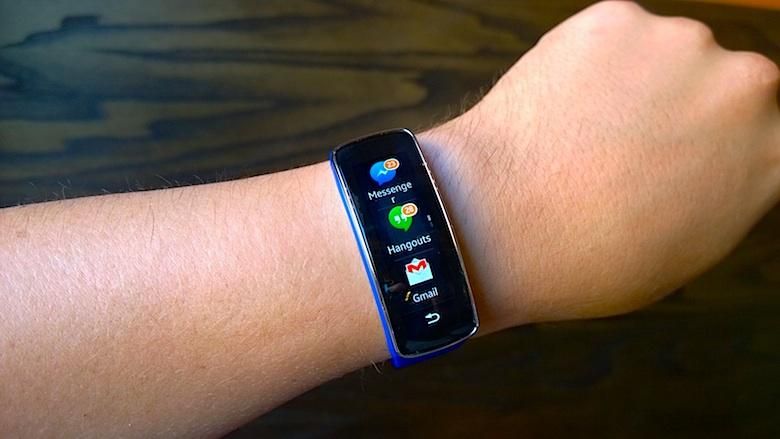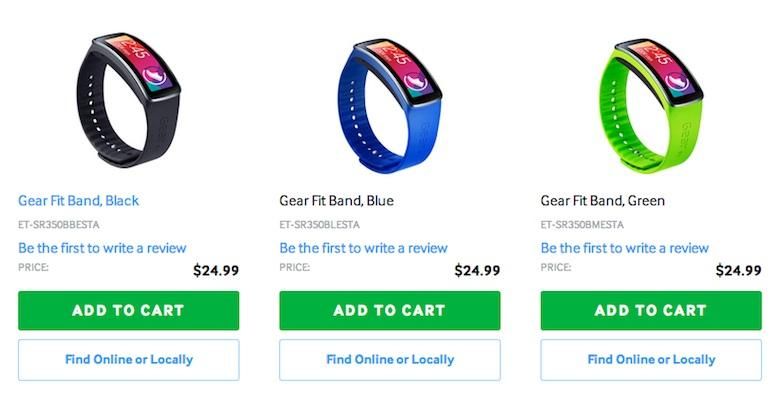If there’s one thing about us geeks, it’s our capacity to be super-critical about every little thing you can imagine. Sometimes that’s a good thing: it prevents us from being bamboozled by every piece of techno-trash a company tries to shove down our throat, and it prompts the more vocal among us to shout out loud until those firms refine their offerings. Criticism, on the whole, can have a net positive effect.
But sometimes it feels like we complain just for the sake of making noise. Publications like ours are as guilty of this as any other, but on the whole, most of us try to keep our criticism confined to legitimate issues. Partly that’s because we have loftier aims than serving as just another venue for fanboys to scrap. More importantly: there’s so much brilliance in so much of today’s mobile technology that it seems irresponsible not to acknowledge that, as we always say on the podcast, we’re living in a world full of gadgets we wished we owned when we were kids.
The Samsung Gear Fit is one such device. A wrist-hugging 27g ingot of curved technology, it’s one of the sexiest wearables I’ve ever donned. Granted, that’s not the world’s biggest achievement at this early stage of smartwatch development, but there is some truly cool functionality here to back up the looks. I’m not saying that all the middling reviews out there are invalid –not at all– but there’s also plenty here to appreciate. So, in the spirit of last season’s similar editorial on the Galaxy S5, here’s five reasons why the Samsung Gear Fit doesn’t suck as much as your nerd friends say it does.
It’s Less Awkward Than You Think
“Get evleaks down here right away.”
When we first went hands-on with the Gear Fit a few months back, we were struck by its design but doubtful about its usability. While the curved stripe of a display was striking, it only functioned in landscape … meaning you either had to deal with reading everything sideways, or wear it on the inside of your wrist like the good Admiral above. This shortcoming served to reinforce memories of the Samsung of yore –big on concept, short on execution– an impression the company was pointedly trying to avoid with talk about its new customer-first philosophy.
Thankfully, it was only a few weeks later that Samsung released a firmware update for the Gear Fit that enabled portrait orientation. With the new configuration, you can wear the Gear Fit like either of its siblings –that is to say, like a real watch– without the neck-twisting contortions or inner-wrist shenanigans necessary on launch day. Should Samsung have had this functionality ready on day one? Absolutely; it might’ve saved them from a great many criticisms in initial hands-on videos. But it’s here now, and it works well.
It Lasts Forever
One of the principal complaints about the first Galaxy Gear was its lackluster battery life, which saw users recharging it every other day with moderate use. Adding insult to injury, the charging cradle that came with the original Gear was a heaping hulk of pleather-coated plastic, awkward to use and annoying to carry on overnight trips.
With the Gear Fit, Samsung has largely corrected for the charger problem (it’s now a tiny snap-on deal), but it’s in endurance where the little device sings. When I bought a Gear Fit as a companion to the Galaxy S5 Active I trashed in my full review, I didn’t expect the watch to last as long as the Pebble I routinely rock … but that’s exactly what it did. Using the Gear Fit as my primary smart watch over the course of about a week, I only needed to recharge it once. That’s despite regular buzzing and beeping from every kind of notification a smartphone is capable of, and more fiddling than usual due to new-gadget novelty. Granted, I wasn’t using it as the fitness companion it’s marketed as, so I was sparing it the drain of constant pedometer and heart rate measurements, but 6-7 days of uptime is still a remarkable achievement for a device with a tiny 210 mAh battery.
The Software Delivers
Samsung’s new Tizen software for the Gear Fit probably has plenty to do with that excellent endurance – and more importantly, it’s a great day-to-day OS. While I continue to lament the removal of some of the original Gear’s gesture controls, the Fit’s software makes up for the lack of flashy moves with responsiveness and a straightforward interface that pretty much does what it says it’ll do. Whether I’m setting it to track my sleep (I’m about 80% restful), checking my Gmail without taking the phone out of my pocket, or asking it to buzz me awake in the morning (which it does automatically when I set an alarm on the phone), it’s consistent and quick. In short: it gets the job done.
It Makes It Through The Rain
We’ve given Samsung some bunk about the water-resistance of its products before, most notably in the Galaxy S5 Active review linked in the previous category. When it comes to Samsung smartphones, it seems to be something of a gamble whether you’ve completed the umpteen steps necessary to secure a device against water intrusion (and even then, it’s not guaranteed you’ll be covered should you take it in for service).
But with no flaps or ports to worry about, the Gear Fit’s body is much less prone to moisture penetration. Its IP67 rating starts to mean something in environments like the one we encountered during the S Health review above, with the Fit’s face subjected to very cold Charles River water while on the boat, and its other side doused in very warm Michael Fisher sweat for the rest of the day. Despite the constant moisture abuse, the Fit didn’t blink an eye, and I was left with the (admittedly optimistic) impression that it could handle months of said use without a problem. (Just don’t bash it against too many walls: like almost every Samsung device, the Fit is made of very soft plastic which dings easily.)
You Can Make It Your Own
Finally, the Samsung Gear Fit isn’t a one-size-fits-all device. The blue band on my personal unit may have cost me an extra 25 clams at the AT&T store, but it’s worth it for a guy like me who enjoys color-coordinating his weird technology with his weird boat shoes. And the customization doesn’t stop at hardware: a bevy of custom clocks and wallpapers are available in both portrait and landscape modes, ranging from the conventional to the absurd. You can even set a custom wallpaper based on a photo or a downloaded image (Fit owners: 128 x 432 is the rez, if you’re into making your own), and you can set a shortcut to your favorite app or function with a double-tap of the side key.
None of this is to say the Gear Fit doesn’t deserve its share of criticism: it’s far from a perfect wearable, and the developments coming from the Android Wear arena at this week’s Google I/O will give it a run for its money (at the very least). Also, fitness experts –at whom this device is squarely targeted– doubtless have valid criticisms about the Fit’s more athletic aspects that have so far gone untested on my own unit. But for someone looking for a low-profile wearable companion to their Galaxy smartphone, without the bulk or bling of the Gear 2 or Gear 2 Neo, the Samsung Gear Fit offers a lot for the price … and it doesn’t deserve the bunk it’s getting from the blogosphere. If I could, I’d use it with my non-Samsung smartphones … but that’s another discussion entirely.





